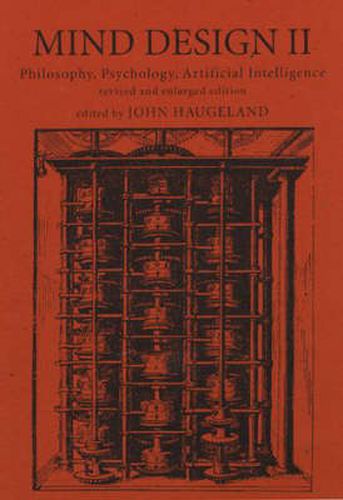Readings Newsletter
Become a Readings Member to make your shopping experience even easier.
Sign in or sign up for free!
You’re not far away from qualifying for FREE standard shipping within Australia
You’ve qualified for FREE standard shipping within Australia
The cart is loading…






Ming Design II is a welcome update of its predecessor, itself a useful compendium on the philosophy of cognitive science. This new volume retains the intellectual foundations, and some discussions of classical AI built on them, while adding connectionism, situated AI, and dynamic systems theory as extra storeys. Which of these is the most stable, and whether the foundations need to be re-worked, are questions readers will be eager to explore.
– Margaret A. Boden, Professor of Philosophy and Psychology, University of Sussex, UK
Haugeland’s Mind Design II brings together nearly all the essential philosophical perspectives in Cognitive Science. If you want to understand current opinion on the philosophy of mind, you should make sure you are familiar with the contents of this book.
– James L. McClelland, Carnegie Mellon University and the Center for the Neural Basis of Cognition Mind design is the endeavor to understand mind (thinking, intellect) in terms of its design (how it is built, how it works). Unlike traditional empirical psychology, it is more oriented toward the how than the what. An experiment in mind design is more likely to be an attempt to build something and make it work–as in artificial intelligence–than to observe or analyze what already exists. Mind design is psychology by reverse engineering.
When Mind Design was first published in 1981, it became a classic in the then-nascent fields of cognitive science and AI. This second edition retains four landmark essays from the first, adding to them one earlier milestone (Turing’s Computing Machinery and Intelligence ) and eleven more recentarticles about connectionism, dynamical systems, and symbolic versus nonsymbolic models. The contributors are divided about evenly between philosophers and scientists. Yet all are philosophical in that they address fundamental issues and concepts; and all are scientific in that they are technically sophisticated and concerned with concrete empirical research.
Contributors: Rodney A. Brooks, Paul M. Churchland, Andy Clark, Daniel C. Dennett, Hubert L. Dreyfus, Jerry A. Fodor, Joseph Garon, John Haugeland, Marvin Minsky, Allen Newell, Zenon W. Pylyshyn, William Ramsey, Jay F. Rosenberg, David E. Rumelhart, John R. Searle, Herbert A. Simon, Paul Smolensky, Stephen Stich, A. M. Turing, Timothy van Gelder
$9.00 standard shipping within Australia
FREE standard shipping within Australia for orders over $100.00
Express & International shipping calculated at checkout
Ming Design II is a welcome update of its predecessor, itself a useful compendium on the philosophy of cognitive science. This new volume retains the intellectual foundations, and some discussions of classical AI built on them, while adding connectionism, situated AI, and dynamic systems theory as extra storeys. Which of these is the most stable, and whether the foundations need to be re-worked, are questions readers will be eager to explore.
– Margaret A. Boden, Professor of Philosophy and Psychology, University of Sussex, UK
Haugeland’s Mind Design II brings together nearly all the essential philosophical perspectives in Cognitive Science. If you want to understand current opinion on the philosophy of mind, you should make sure you are familiar with the contents of this book.
– James L. McClelland, Carnegie Mellon University and the Center for the Neural Basis of Cognition Mind design is the endeavor to understand mind (thinking, intellect) in terms of its design (how it is built, how it works). Unlike traditional empirical psychology, it is more oriented toward the how than the what. An experiment in mind design is more likely to be an attempt to build something and make it work–as in artificial intelligence–than to observe or analyze what already exists. Mind design is psychology by reverse engineering.
When Mind Design was first published in 1981, it became a classic in the then-nascent fields of cognitive science and AI. This second edition retains four landmark essays from the first, adding to them one earlier milestone (Turing’s Computing Machinery and Intelligence ) and eleven more recentarticles about connectionism, dynamical systems, and symbolic versus nonsymbolic models. The contributors are divided about evenly between philosophers and scientists. Yet all are philosophical in that they address fundamental issues and concepts; and all are scientific in that they are technically sophisticated and concerned with concrete empirical research.
Contributors: Rodney A. Brooks, Paul M. Churchland, Andy Clark, Daniel C. Dennett, Hubert L. Dreyfus, Jerry A. Fodor, Joseph Garon, John Haugeland, Marvin Minsky, Allen Newell, Zenon W. Pylyshyn, William Ramsey, Jay F. Rosenberg, David E. Rumelhart, John R. Searle, Herbert A. Simon, Paul Smolensky, Stephen Stich, A. M. Turing, Timothy van Gelder